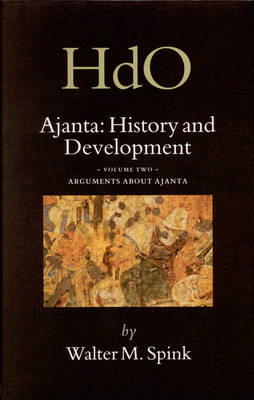Handbook of Oriental Studies. Section 2, India
2 total works
Ajanta: History and Development, Volume 2 Arguments about Ajanta
by Walter Spink
Published 1 January 2006
Volume Two begins with writings by some of the most important critics of Walter Spink's conclusions, interspersed with his own responses, using a thorough analysis of the great Cave 26 to support his assertions. The author then turns to matters of patronage, and to the surprising fact that, unlike most other Buddhist sites, Ajanta was purely "elitist", developed by less than a dozen major patrons. Its brief heyday traumatically ended, however, with the death of the great emperor Harisena in about 477, creating political chaos. Ajanta's anxious patrons now joined in a headlong rush to get their shrines dedicated, in order to obtain the expected merit, before they fled the region, abandoning their caves to the monks and local devotees remaining at the now-doomed site. These "intrusive" new patrons now filled the caves with their own helter-skelter votive offerings, paying no heed to the well-laid plans of the years before. A similar pattern of patronage is to be found in the redecoration of the earlier Hinayana caves, where the careful planning of the work being done during Harisena's reign is suddenly interrupted by a host of individual votive donations. The volume ends with a new and useful editing of Ajanta inscriptions by Richard S. Cohen.
Volume Five comprises, along with introductory comments, two "cave by cave" guides. One which, very briefly, describes the character of each cave and its patronage, is intended to be useful for the general visitor to the site. The other, very detailed, discusses the position and peculiarities of each cave in relation to the overall, year by year, development of the site. This volume also contains a complete set of cave plans, and various illuminating charts, graphs, outlines, and maps.

